Why Star Wars Characters Finn And Poe Should Have Fallen In Love
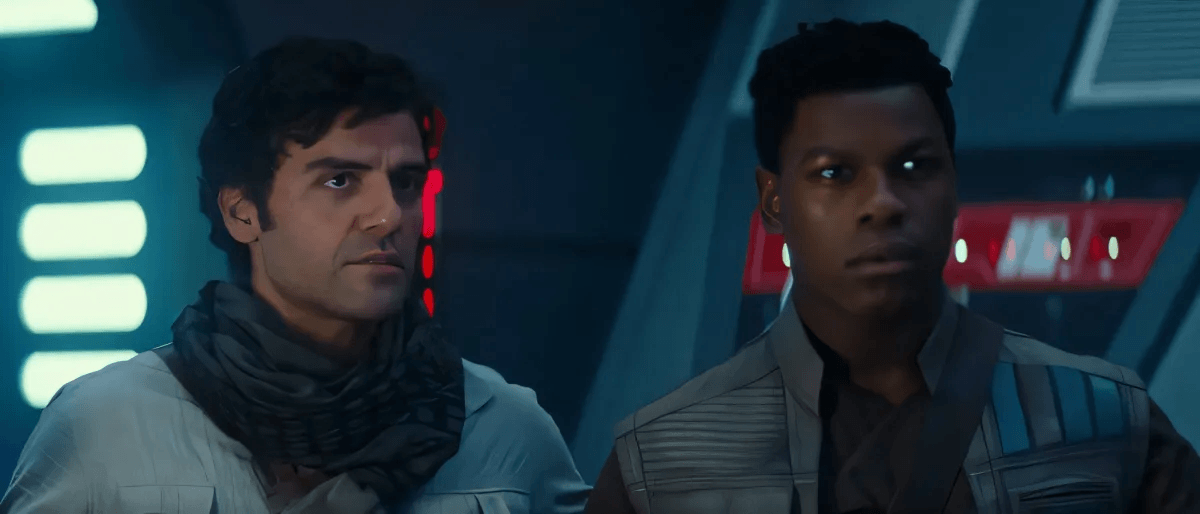
There is no question that Star Wars broke boundaries in the world of sci-fi movies. What started in 1977 with an $11 million budget has since expanded into one of the biggest franchises in the world. Spin-offs, merchandise, feature films, games, toys, and even a verified Jedi religion are just a portion of what Star Wars has become.
Their newest films, the sequel trilogy, met great commercial success. There were many elements of these films that were incredible. However, there were also some shortcomings.
One of these shortcomings was the missed opportunity to introduce a romantic relationship between Finn and Poe, two characters with incredible chemistry whose relationship could easily have naturally progressed to romance.
Here's an overview of the films, an argument in favor of a romantic FinnPoe relationship, and an explanation of the importance of representation in modern media.
The Origin of the Star Wars Sequel Films: When Disney Took Over
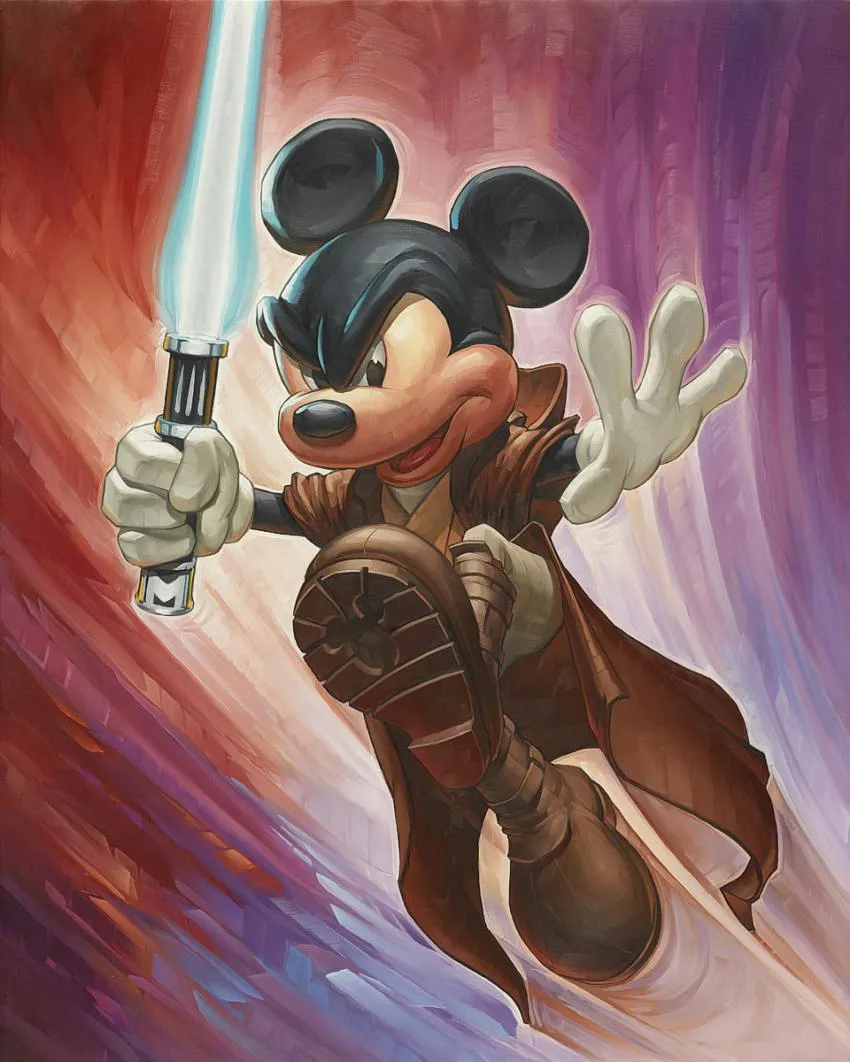
George Lucas decided to sell the Lucasfilm franchise after spending years on the original and prequel films; he valued spending time with his family. In October of 2012, Disney acquired the rights to Lucasfilm for a deal costing more than $4 billion and announced a new trilogy of films to begin production in 2015.
The previous Star Wars film, Revenge of the Sith, rounded out the prequel trilogy after release in 2005, meaning that this film would be breaking a ten-year hiatus. Expectations couldn’t have been higher.
The new Star Wars trilogy takes place canonically thirty years after The Return of the Jedi and the canonical fall of the Empire. These stories follow the threat of The First Order, lead by the mysterious General Snoke, who seeks to re-establish the Empire’s tyrannical rule.
These movies feature Rey, a scavenger from Jakku with an unknown past (Daisy Ridley), Finn, a rebellious stormtrooper (John Boyega), Poe Dameron, a pilot in the Resistance (Oscar Issac), and Kylo Ren, a First Order leader formally called Ben Skywalker (Adam Driver). They also include original cast members like Luke Skywalker (Mark Hamill), Leia Organa (Carrie Fisher), and Han Solo (Harrison Ford).
The Force Awakens (2015) was directed by JJ Abrams and had the most commercial success. It could be considered a retelling of A New Hope and follows a very similar storyline to the first-ever Star Wars film. The Last Jedi (2017) was directed by Rian Johnson and re-introduces Luke Skywalker, following Rey’s training with him and the growing threat of the First Order. Finally, The Rise of Skywalker (2019), also directed by JJ Abrams, re-introduces the threat of Palpatine and concludes the trilogy.
The Story Behind Stormpilot: Finn and Poe Dameron's Roles in Star Wars
Finn and Poe first meet at the beginning of The Force Awakens after Poe is captured by Kylo Ren. Poe manages to hide an important map inside of his droid, BB8, but is unable to escape the First Order and expects to die at their hands. However, a rebellious Stormtrooper called FN2187 helps Poe escape in an attempt to rid himself of the First Order. It is Poe who gives FN2187 the name Finn, which he continues to go by throughout the films.
After their ship crashes on Jakku, Poe is presumed dead. Finn takes up his mission, and his jacket, aiding Rey in reuniting BB8 with the Resistance and ultimately reuniting with Poe after helping to destroy Starkiller base. The two embrace and Poe asks Finn to keep his jacket, as he thinks it suits him.
In the next two films, Finn and Poe work together as members of the Resistance and eventually take over as co-generals after Leia Organa’s death. The two help Rey on her mission to defeat Kylo Ren and General Snoke, and grow closer through the tumultuous circumstances and impossible stakes as the First Order gains power.
Thankfully, both characters survive the trilogy and play instrumental roles in defeating the First Order, bringing peace back to the galaxy. The two never share a confirmed romantic relationship, although their closeness and importance in each other’s lives are undeniable to fans and cast members alike.
What the Star Wars cast and crew think about Finn and Poe's relationship
The chemistry between Finn and Poe is acknowledged by cast members Oscar Issac and John Boyega, as well as JJ Abrams in the following interview:
Perhaps the biggest supporter of establishing a romantic relationship between Finn and Poe is Oscar Issac, who voices his support not only in this interview but in several others. The cast member has stated over and over again that he would have liked for the story to ‘naturally progress’ in this manner, and other castmates (along with several fans) agree with him.
However, John Boyega also makes valid points in the importance of establishing platonic, intimate relationships between two men on screen. This too is uncommon and plays into the unfair stereotype that men can’t express emotions and act vulnerable in their friendships the same way women can.
Both of them make fair, important points. However, establishing a romantic relationship between these two characters would have benefitted the film, not only in representation but in the story itself.
The three main reasons a romance between Finn and Poe would have worked
1. Finn and Poe falling in love would have kept a more consistent and focused storyline for the two characters
A big problem these films have is a lack of direction. Characters that should have been the main focus are sidelined and separated, while Rey and Kylo Ren are thrown into the spotlight. Both Finn and Poe are underutilized, especially Finn in the third film, where he is unfairly sidelined and replaced by Ben as the male lead.
There are also several romantic plotlines that are confusing and never really fleshed out as well as they could have been, including the kiss between Finn and Rose that is never addressed again and the introduction of Zorrii, a faceless woman from Poe’s past who seems to exist just to draw attention away from Finn and Poe.
It wouldn’t be a good idea to put Poe and Finn together just for the sake of representation. However, these films ignore what would have been a natural relationship progression that makes sense for the characters in favor of introducing dead-end (straight) romances that distract rather than driving the overarching story.
2. The chemistry between Oscar Issac and John Boyega was one of the movie’s greatest strengths
The opening scene between Finn and Poe is electric, simply because the two actors work well together. Putting more focus on a relationship between the two wouldn’t just have made sense to the story; it would have been interesting to watch.
In fact, in a video interview with GQ, Issac reveals that his character, Poe, was originally supposed to die in the first movie. Going from a one-scene character to a major player in all three movies partially comes from that chemistry. Star Wars could have played to that strength, but the pair was overall underutilized.
3. A relationship would have meant real representation and originality, two things that Star Wars should have been passionate about
Star Wars is massive, and their fanbase is even more so. Much of that fanbase is made up of diverse people, and there were several opportunities to have diverse, genuine relationships between any number of the main characters (whether LGBT+ or interracial).
While these films did a good job casting diversely, the utilization of these characters (with the exception of Rey) leaves much to be desired. Rose Tico, for example, plays a huge role in the second film and barely appears in the third. Even a relationship between Rose and Finn, who do kiss, would have been preferable to sidelining their character progression to focus on Rey and Ben.
The role of romance in the Star Wars movies
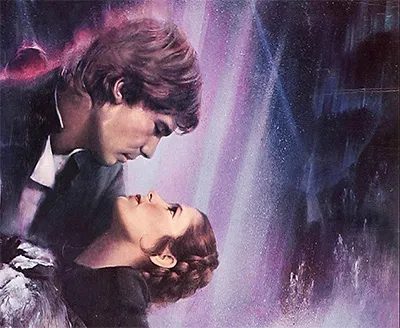
Star Wars has an interesting relationship with romance. It varies from being present to being essential, and then to be ambiguous and confusing.
In the original films, there is an obvious budding love-hate relationship between Han and Leia. It isn’t the main focus of the story and does not involve the main protagonist.
In the prequels, however, Anakin’s forbidden relationship with Padme is a huge factor in his fall to the dark side. This romance not only advances the plot but also makes for a larger argument against the lives and morals of the Jedi Order, who forbid familial and romantic attachments. This restrictive lifestyle, meant to protect Jedi from the influence of negative emotions like anger and jealousy, actually lead to their downfall.
George Lucas has defended the style of the prequel romance, which is criticized for its corniness, in The Star Wars Archives (1999-2005). He maintains that Star Wars is meant to be written as a melodrama and that his style of writing follows that formatting.
The sequel films have a much different approach to romantic relationships. With so many characters in the same age range, there are countless possibilities of romantic couplings in all three films. However, almost all of these possibilities are left ambiguous and up for interpretation. Finn, for example, has romantic chemistry with Rey in the first film but shares a kiss with Rose in the second. He also, of course, has chemistry with Poe. Zorrii is introduced as a past love interest to Poe Dameron, but the two never get back together, although Poe does flirt with her in the final episode.
The only confirmed romantic relationship is between Ben Solo and Rey, who also share a kiss at the end of the film before Ben’s death. But even this is left for interpretation; the novelization by Rae Carson calls it a ‘kiss of gratitude’ and JJ Abrams has called their relationship a ‘brother-sister thing’.
A summary of the LGBT+ characters in the Star Wars universe
Similar to Finn and Poe, Sherlock and John (Sherlock), Dean and Castiel (Supernatural), and countless others, much of the LGBT+ representation is up to a matter of interpretation.
The fact that there’s a YouTube channel titled AreTheyGay, with 260k subscribers and featuring countless characters from different franchises, is proof that a massive amount of queer ‘representation’ only exists subtextually.
This idea even applies to Luke Skywalker. In an interview with Time, Mark Hamill himself tells fans that Luke’s character and identity should be left up for interpretation and that Luke should be judged by his character rather than who he loves.
Hamill has also stated his opinion of Finn and Poe being a couple on Twitter.
Luke never met either Finn or Poe
— Mark Hamill (@HamillHimself) December 30, 2019
So what they do behind closed doors
I guess I'll never know...
But I would like to also note that love is love
Whatever floats your boat.#LGBTerrific ???? https://t.co/swT1F1UsOG
In terms of confirmed LGBT+ characters within Star Wars, there are (almost) none in films, and only a handful exist within the expanded universe. Almost all of these characters can be found in novels, most notably in the Aftermath trilogy written by Chuck Wendig and Guilherme Kroll. There are also a few featured in games, like Juhani from the game Knights of the Old Republic.
The only exception to this is the kiss between two background characters during the resolution of the film.
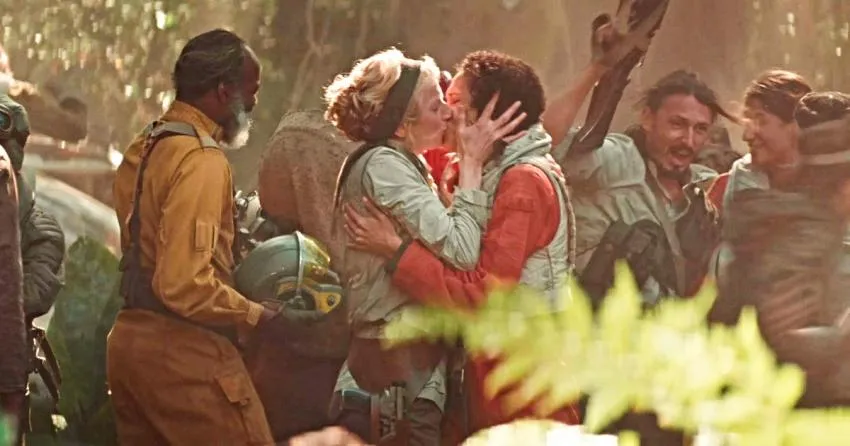
According to ScreenRant, these characters are named Commander Larma D'Acy and Wrobie Tyce, and they are a married couple. However, these characters are barely featured in the movie. With no real connection to the audience and no emotional investment in their wellbeing beyond the uniforms, they wear declaring their loyalty to the Resistance, calling this moment groundbreaking is a bit overreaching.
And with JJ Abrams promising LGBTQ+ representation, stating to the Daily Beast that “of course” there will be, it’s disappointing.
LeFou: Disney's first LGBT+ character
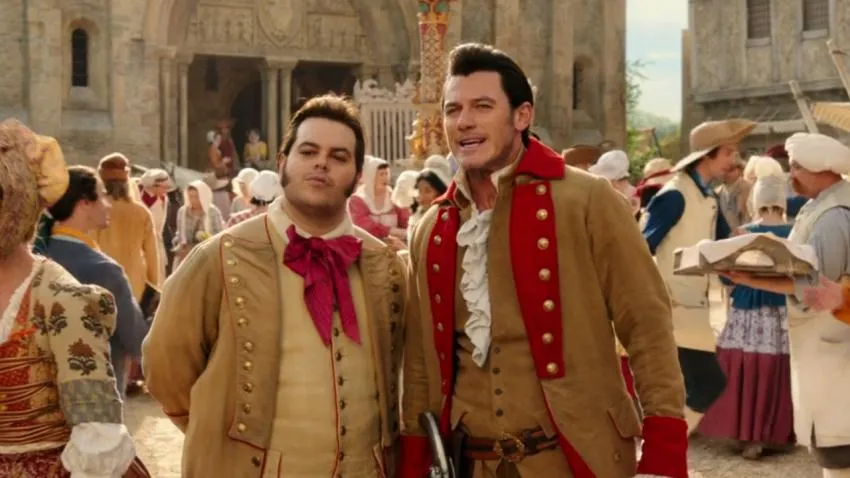
Since Disney acquired the rights to Lucasfilm and is responsible for the production of the new sequel trilogy, it makes sense to examine their other work in terms of LGBT+ representation. Coincidentally, their first canonically gay character was featured in the live-action Beauty and the Beast remake, which came out in 2017.
LeFou, played by Josh Gad, was originally written as Gaston’s sidekick. In this remake, he is also canonically in love with Gaston. This attraction was unrequited, and the most blatant moment came at the end of the movie when he got to dance with another man at the ball.
As a result of their inclusion of LeFou, this film was banned in Kuwait, banned in an Alabama theater, and almost banned in Malaysia (originally, they asked for four minutes of film to be edited out, but settled for a 13+ rating).
The real reason representation matters
There are many forms of representation in the media, but we still fall short when portraying LGBT+ relationships. Many fans are criticized for creating relationships between characters of the same sex, but the reality is that most LGBT+ relationships exist in subtext alone.
If these relationships are explicitly gay, many times one or both characters will end up dying in the film, television show, or book. This falls into a trope known as ‘killing the gays’ and can be found in Supernatural, Atomic Blonde, Girl House It Chapter 2, The 100, Arrow, and Battlestar Galactica to name a few.
Real representation happens when gay relationships are treated as normally as straight ones. Contrary to what some believe, this is not forcing characters to be gay for the sake of social justice. It’s allowing characters with natural chemistry who work well together, like Finn and Poe, to have romantic relationships when it makes sense in the story. And this happens more often than we’re seeing in the media today.
As well as this, LGBT+ people deserve to see themselves in films like this. Having a throwaway scene that can be easily edited out or missed is not representation; it’s not even the bare minimum of what we should be doing when telling these stories. It’s time to move forward and make real, impactful decisions when it comes to representation in the media.
Opinions and Perspectives
Those little moments between them meant so much more than any forced romance plot.
It amazes me how much chemistry they had with such limited screen time together.
You can really see the missed opportunity when you watch their scenes together.
The fact that Oscar Isaac played it that way intentionally shows how organic it could have been.
Their relationship had such a natural progression from strangers to trusted allies.
Imagine the impact this would have had on representation in mainstream cinema.
The article really nails why this would have strengthened the overall narrative.
Star Wars has always been about hope and change. This would have fit perfectly with those themes.
Each time they reunited on screen, you could feel the connection between them.
The military setting would have made their romance even more meaningful.
That background kiss scene felt like such a hollow gesture compared to what could have been.
I respect that some prefer them as friends, but their dynamic had so much more potential.
Looking back, all the elements were there for a great love story. What a missed opportunity.
The whole Zorrii subplot felt like such an obvious attempt to deflect from their chemistry.
Even Mark Hamill supported the idea. That says something about how natural it felt.
I wonder if George Lucas would have handled their relationship differently.
Compared to the original trilogy's Han and Leia, Finn and Poe had way more chemistry.
The way Poe immediately trusted Finn, a former stormtrooper, always struck me as significant.
I actually loved their friendship as it was, but I can see why people wanted more.
It bugs me when people say it would have been forced. Their relationship developed more naturally than most of the other romances.
Think about how powerful it would have been for young fans to see this kind of representation in such a major franchise.
Watching them interact was one of the best parts of the trilogy. Such natural chemistry between the actors.
The argument about consistent storylines makes sense. Their character arcs felt scattered without a clear direction.
People forget that romance has always been part of Star Wars storytelling. This would have fit perfectly into that tradition.
Star Wars really missed an opportunity to make history here. Their relationship was already so well established.
I love how John Boyega and Oscar Isaac both acknowledged the chemistry in interviews. They understood their characters so well.
That jacket scene was more romantic than any interaction between Rey and Kylo Ren.
The way they handled Rose's character was equally disappointing. They seemed afraid of any non-traditional romance.
I just wish Disney had been brave enough to follow through on what the actors and fans clearly saw developing.
My kids would have loved seeing a natural progression of their relationship. We need more diverse love stories in family films.
Sometimes I wonder if the writers were intentionally playing with the idea before executive decisions shut it down.
Anyone else notice how they barely gave Finn any meaningful storylines in the last film? Such a waste of potential.
The article makes a good point about how their storylines lost focus in the later films. A romance arc could have given them more purpose.
As a longtime Star Wars fan, I would have loved seeing this kind of representation in my favorite franchise.
Looking at how naturally their dynamic developed, it makes the forced Rey-Kylo romance even more disappointing.
Star Wars has always been about pushing boundaries. This would have been a perfect way to continue that tradition.
The way Finn lit up whenever he saw Poe was just adorable. You can't tell me there wasn't something there.
I found it frustrating how they kept separating them in the later films instead of developing their relationship further.
Remember when Poe was supposed to die in the first film? Their chemistry was so good they kept him alive!
That background lesbian kiss was such a cop-out. They had a real chance with Finn and Poe to do something meaningful.
The casual representation argument makes sense to me. It would have felt organic rather than forced.
Interesting perspective but I think people are reading too much into normal friendship dynamics.
The fact that they became co-generals by the end showed how perfectly in sync they were. A romance would have felt natural.
I actually disagree. Not every close relationship needs to be romantic. Their friendship was beautiful as it was.
What really struck me was Oscar Isaac's clear enthusiasm for the potential romance in interviews. You could tell he saw it too.
You know what bothers me most? That pointless Zorii character introduction just to give Poe a female love interest backstory. It added nothing to the plot.
I feel like Disney played it too safe. They had a perfect opportunity but went with the safer Rey-Kylo route instead.
The way Poe gave Finn his name and then later insisted he keep the jacket was such a meaningful moment. The foundation was there for something more.
While their friendship was great, I actually prefer seeing strong platonic male relationships in movies. We don't see enough of those.
I completely agree about the amazing chemistry between Finn and Poe. Their escape scene in The Force Awakens was electric!
